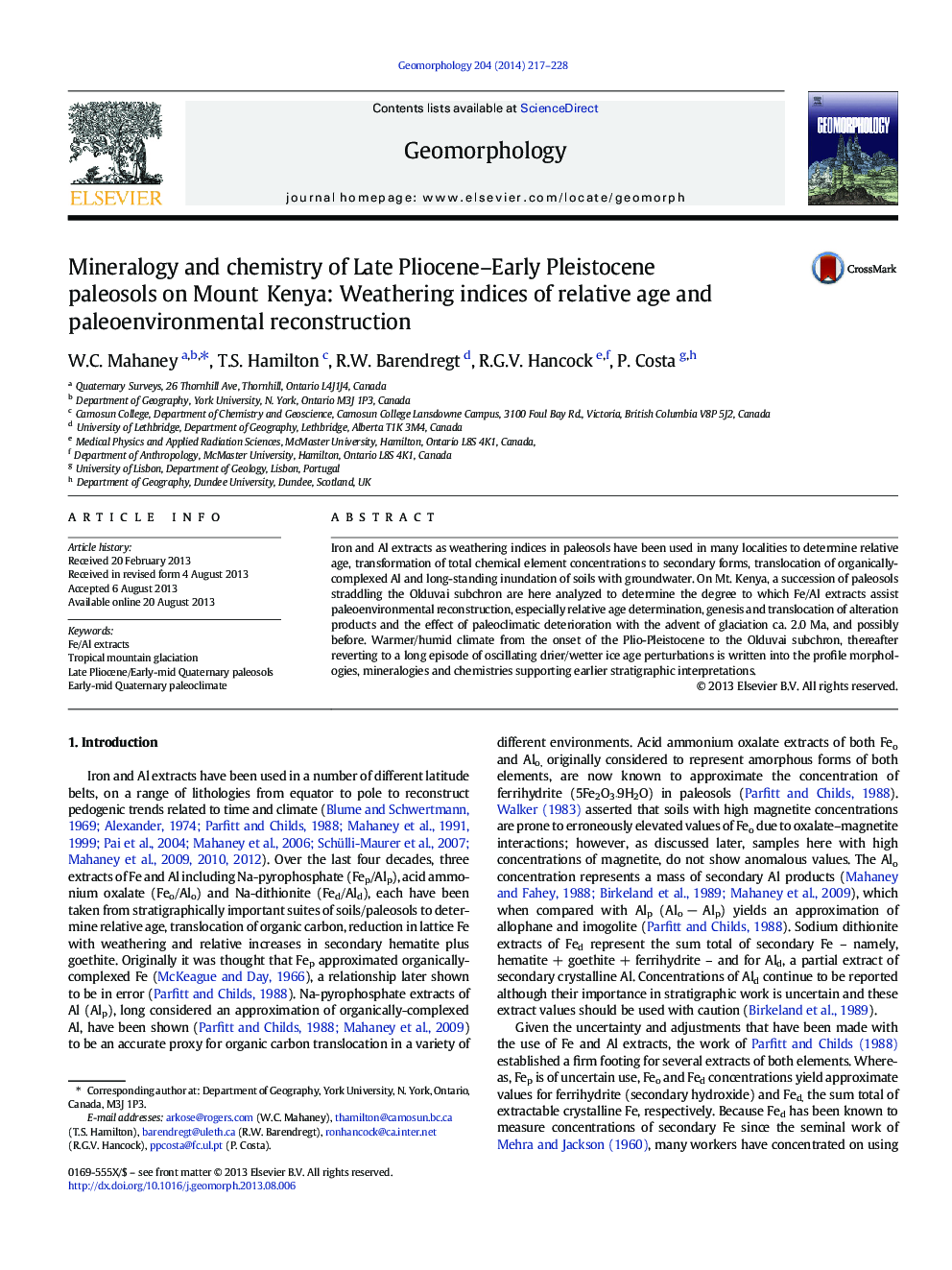| Article ID | Journal | Published Year | Pages | File Type |
|---|---|---|---|---|
| 6432723 | Geomorphology | 2014 | 12 Pages |
â¢Fe extracts as relative age controls on paleosols.â¢Magnetostratigraphic dating of paleosols at the Plio-Pleistocene transition.â¢Paleosols as proxy Late Pliocene/Early Pleistocene paleoclimatic indicators.â¢Correlation of Mt. Kenya paleosols with Late Cenozoic paleoclimate fluctuations.
Iron and Al extracts as weathering indices in paleosols have been used in many localities to determine relative age, transformation of total chemical element concentrations to secondary forms, translocation of organically-complexed Al and long-standing inundation of soils with groundwater. On Mt. Kenya, a succession of paleosols straddling the Olduvai subchron are here analyzed to determine the degree to which Fe/Al extracts assist paleoenvironmental reconstruction, especially relative age determination, genesis and translocation of alteration products and the effect of paleoclimatic deterioration with the advent of glaciation ca. 2.0Â Ma, and possibly before. Warmer/humid climate from the onset of the Plio-Pleistocene to the Olduvai subchron, thereafter reverting to a long episode of oscillating drier/wetter ice age perturbations is written into the profile morphologies, mineralogies and chemistries supporting earlier stratigraphic interpretations.
